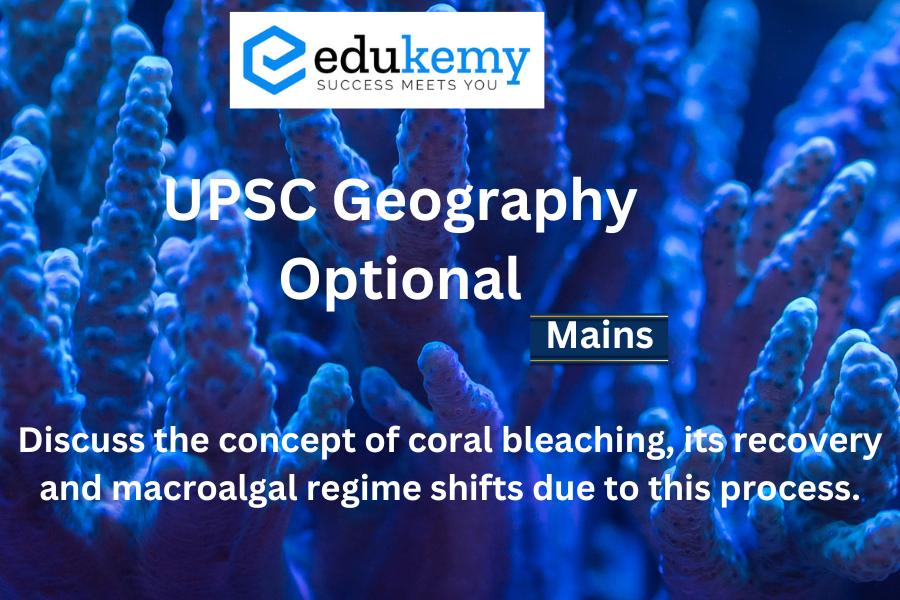The process of coral bleaching is complex and global, intricately linked to climate change and other anthropogenic activities.
As per the NOAA Coral Reef Watch, 71% of the world’s coral reefs likely experienced bleaching at least once between 1985 and 2017.

Concept of coral bleaching
Coral bleaching is the phenomenon where corals expel the symbiotic algae (zooxanthellae) living in their tissues, causing them to turn white.
This occurs due to stress, primarily driven by increased sea temperatures. The expelled algae deprive corals of their nutrient source, making them more susceptible to disease and mortality.

The process of coral recovery is linked to macroalgal regime shifts, their relationship is discussed below:

Coral bleaching recovery
Coral recovery, process by which coral reefs, which have been damaged or degraded due to various stressors -pollution, climate change, overfishing, or physical damage, begin to recover and regain their health and ecological function.
Coral recovery can occur naturally through processes-coral recruitment, growth, and reproduction, as well as through human interventions-coral restoration projects.
It depends on factors-water temperature returning to normal levels, reduced stressors, and the ability of corals to regain symbiotic algae.
Resilient corals may recover over time, but prolonged or repeated bleaching events hinder recovery, leading to long-term degradation.
Key components of coral recovery include:
- Natural Recruitment: Larvae of corals settle on suitable substrate and grow into new coral colonies, essential for replenishing coral populations and increasing coral cover on damaged reefs.
- Coral Growth and Regeneration: Existing coral colonies recover from damage or stress through growth and regeneration. Healthy corals can also expand their coverage over time, contributing to reef recovery.
- Ecosystem Restoration: Restoration efforts such as coral transplantation, coral gardening, or artificial reef construction can accelerate coral recovery by supplementing natural recruitment and facilitating the growth of new coral colonies.
- Recovery of Ecological Functions: As coral populations recover, the ecological functions provided by coral reefs, such as habitat provision, shoreline protection, and support for fisheries, are restored, benefiting both marine biodiversity and human communities.
Macroalgal regime shifts
If coral recovery is hindered, the absence of corals may lead to a dominance of macroalgae.
This shift can negatively alter the ecological balance of coral reef ecosystems, affecting the habitat for fish and other marine species.
Macroalgal regime shifts are particularly prevalent in the Caribbean, Pacific and the Indian ocean.
Once the macroalgae forms a stable community it is very difficult for the corals to grow again compromising the quality of whole micro ecosystem. For eg.
The Caribbean region has experienced macroalgal regime shifts in 2001 due to delayed and hindered coral
recovery process.
As per the GATES CORAL LAB team regional approach targeting a particular region for coral recovery is much for effective and result bearing than general approach tackling large scale region.
Contents
To get free counseling/support on UPSC preparation from expert mentors please call 9773890604
- Join our Main Telegram Channel and access PYQs, Current Affairs and UPSC Guidance for free – Edukemy for IAS
- Learn Economy for free- Economy for UPSC
- Mains Answer Writing Practice-Mains Answer Writing
- For UPSC Prelims Resources, Click here

